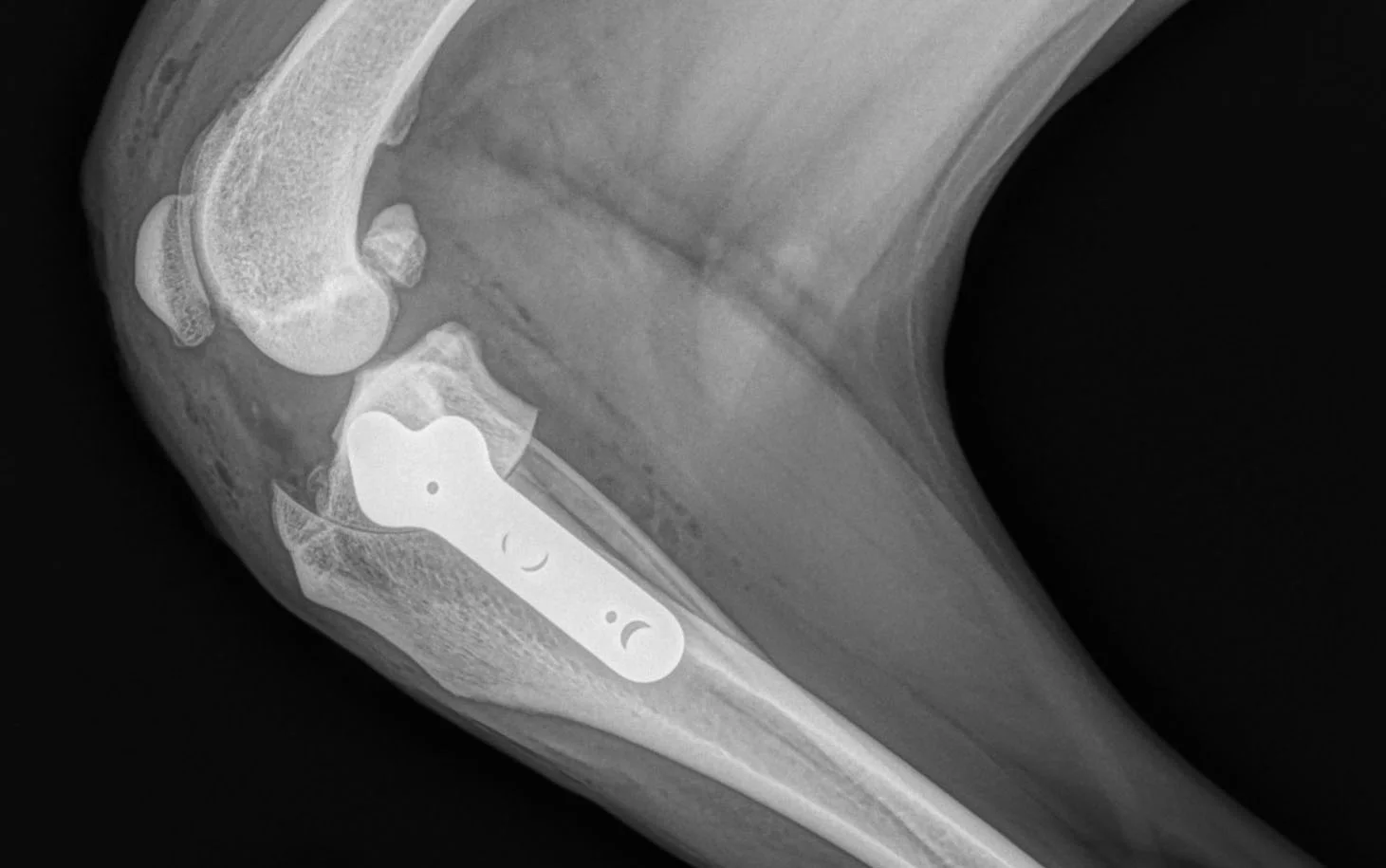POINTS EAST WEST VETERINARY SERVICES
Sports Medicine and Rehabilitation Specialty Practice
CRUCIATE LIGAMENT REPAIR
Cruciate ligament rupture is the single most common surgical orthopedic condition affecting dogs. It doesn’t take much time on the internet to learn that there are multiple treatment options, and that there are conflicting opinions on which is the best. Part of the reason for this disagreement is that the answer varies depending on the individual patient – factors such as patient age, size, build, athletic expectations, degree of injury, owner finances, etc. all need to be considered.
Non-Surgical Options
Rehabilitation Therapy
In a minority of cases, rehabilitation therapy may be enough to resolve the issue. These patients need to be diagnosed early, before instability is present. If the cruciate tear is a result of trauma instead of poor knee conformation, the chance of success increases. Rehabilitation therapy also improves the outcomes for patients that have received surgery.
Orthotic Braces
Have benefit for early cruciate tears before instability, and especially meniscal tearing, is present, and for those not looking to return to an athletic lifestyle. They can also be used on patients ineligible for surgery for other reasons (advanced age, heart disease etc.).
Stem Cells
Recent research has shown that partially torn cruciates can be repaired by injecting stem cells into the joint. We have had good success with this technique.
Surgical Options
There are two main categories of surgery, those that replace the torn ligament with a synthetic version (Extra-Capsular, Tightrope), and those that modify the dynamics of the joint to provide stability (TTA, TPLO). There are pros and cons to each of these techniques.
Many earlier studies have shown that long term (more than a year after surgery), all patients do equally well, but more recent, higher quality research demonstrates the best results with the TPLO procedure. In some cases, a combination of a TPLO and Extra-capsular repair are required. Multiple research papers have shown that rehabilitation therapy also improves short term outcomes of surgery cases.
So which is the best option for your dog?
The answer varies depending on your dog’s condition and athletic expectations. During your appointment, we will evaluate your pet as an individual and discuss the pros and cons of each option to find the one best suited for you.
We have also found that the use of PRP at the time of surgery greatly improves post-operative comfort and use of the surgery limb. It also helps in the reduce pain in other arthritic joints, should they exist.







